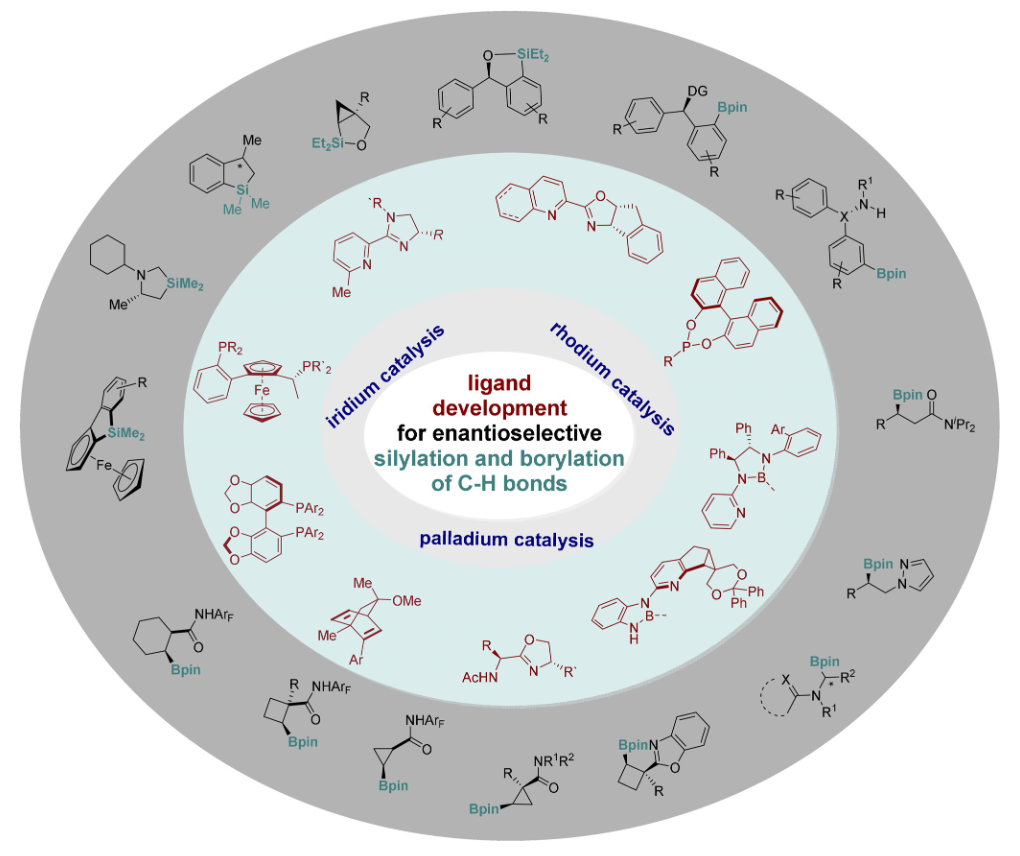Enantioselective reactions that install functional groups at the positions of unactivated C−H bonds can be envisioned to produce intermediates for the synthesis of the active ingredients in pharmaceuticals and agrochemicals directly from simple feedstocks. Among these C−H bond functionalization reactions, those that form carbon–silicon (C−Si) and carbon–boron (C−B) bonds have been pursued because the products of these reactions can be converted to those containing a wide range of functional groups and because compounds containing silicon and boron possess unique properties that can be valuable for medicinal and materials chemistry. Although the silylation and borylation of C−H bonds have undergone extensive development during the past two decades, enantioselective versions of these reactions were not known until a few years ago. In this Minireview, we present the rapid development of enantioselective silylation and borylation of C−H bonds, with an emphasis on the design and development of the types of chiral ligands needed to achieve these reactions and an intention to inspire an expansion of these types of transformations.

https://doi.org/10.1002/anie.202113343